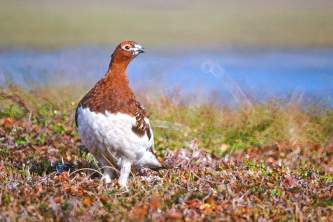Avoiding Hypothermia
If you spend any time outside in Alaska, it's important to understand the causes and symptoms of Hypothermia.
What is Hypothermia?
Hypothermia is the dangerous lowering of the body's internal temperature to below normal. It occurs when the body loses heat faster that it produces heat, which causes the heart and lungs to quit working properly and the brain's ability to think and make rational decisions is quickly compromised when in a chilled state. Hypothermia can develop quickly and, if untreated, can result in death.
Hypothermia is brought on by exposure to cold, chilling winds and by getting wet. It progresses quickly in a person whose body does not have enough energy-producing food to act as fuel for warmth and also in individuals who aren't adequately dressed. Hypothermia can happen at relatively mild temperatures if a person is unprepared and it occurs on land or in water.
Symptoms of Hypothermia
- Absentmindedness, confusion.
- Lack of coordination, weakness.
- Difficulty speaking, slurred speech.
- Uncontrollable shivering (a symptom of mild hypothermia).
- Semiconsciousness or unconsciousness (symptoms of severe hypothermia).
How to Prevent Hypothermia
- Wear several layers of clothing - wool or synthetics are best.
- Protect your head and hands. (Over 50% of body heat is lost from the head.)
- Keep as dry as possible.
- Always wear a personal flotation device (PFD) when around cold water.
- Carry matches in a waterproof container.
If you fall into cold water:
- Keep your clothing on.
- Keep your head out of the water.
- Try to get into a fetal-like position to conserve heat.
- Swim to shore only if it's a short distance.
Remember, ALWAYS wear a PFD when you are around cold water!
- Wearing a PFD increases your survival time.
- Wearing a PFD gives rescuers more time to find and help you.
- A PFD provides extra insulation.
- A PFD keeps your face out of the water.




